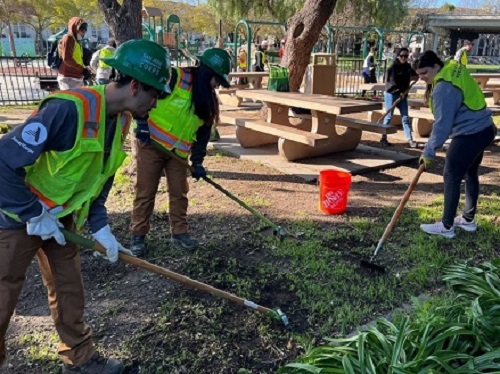The second episode of a four-part Environmental Technical Assistance Program or ETAP podcast series focuses on the crucial connections required between planners, policymakers, and local communities in order to make active transportation systems more attractive and inclusive for all users. (To listen to the first episode, click here.)
[Above photo by AASHTO]
“Active transportation” encompasses “human-powered” mobility options, such as biking or walking, and is also viewed as a way to help bridge the first- and last-mile gap in public transit systems. Active transportation also offers public health benefits as well, as it engages users in physical activity.
This ETAP podcast episode sits down with Tamika Butler, principal of Tamika Butler Consulting, who describes how her firm strives to help build more equitable and inclusive active transportation systems for minority and low-income communities.
The podcast also visits with Joshua Phillips, communications and public relations coordinator for the Alabama Department of Transportation, about “City Walk Birmingham,” also known as “City Walk BHAM.”
The recent completion of Birmingham’s I-59/20 Central Business District (CBD) Interstate bridges brings about a renewed focus on the space underneath the bridges known as City Walk BHAM. The goal of the project is to provide a space to assist in reconnecting Birmingham and create a destination and common area open to all citizens.
Conceptual planning began on City Walk BHAM in 2014 as a way to create a “fresh and vibrant space” underneath the I-59/20 Central Business District Interstate bridges.
Phillips noted on the podcast that at every phase of the project, Alabama DOT worked to engage the public in the project so it could be better tailored to pedestrian needs; an effort that resulted in the creation of public park and recreation spaces within the project.
To listen to the full podcast, click here.


